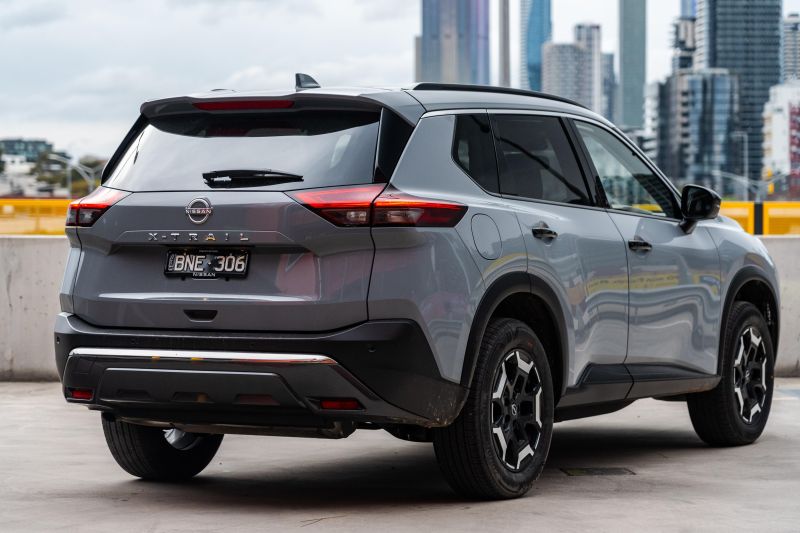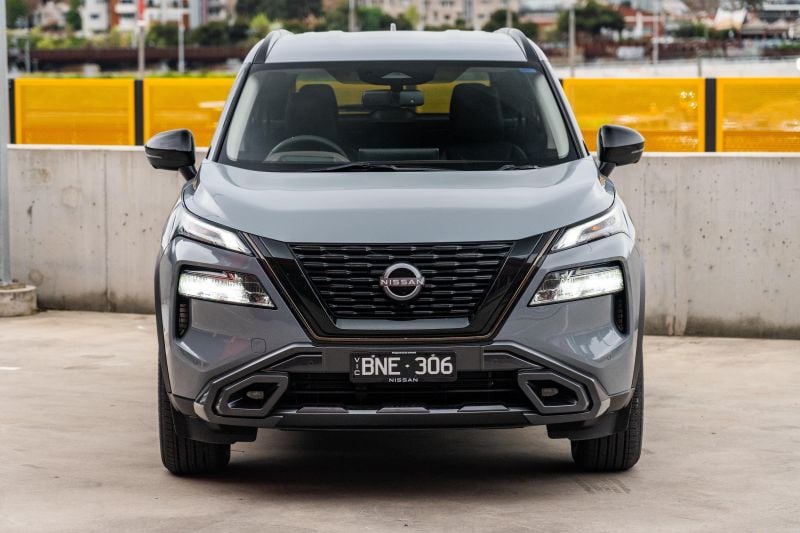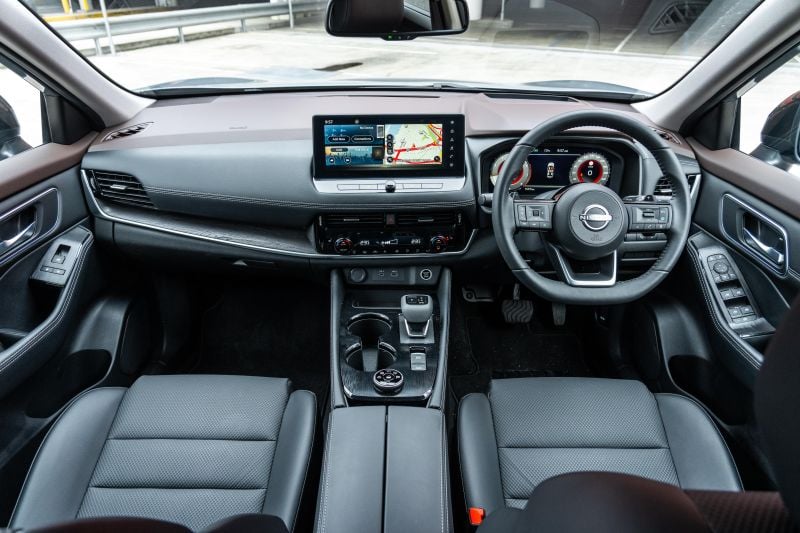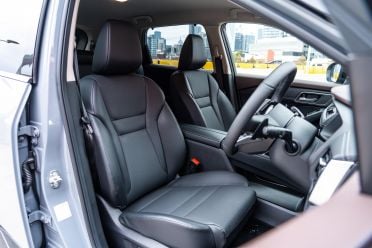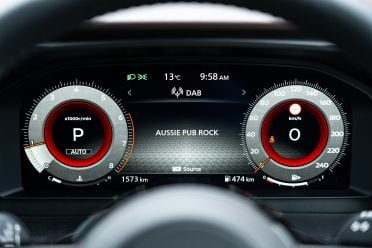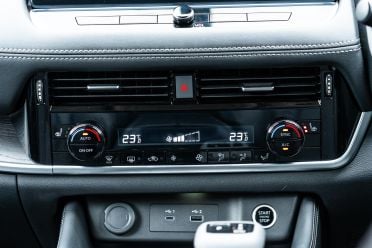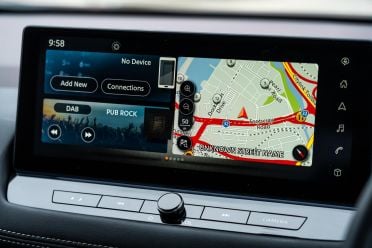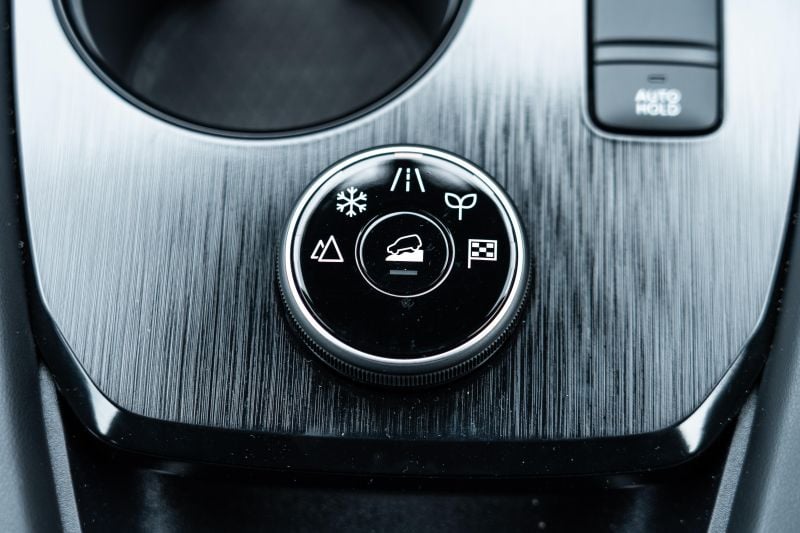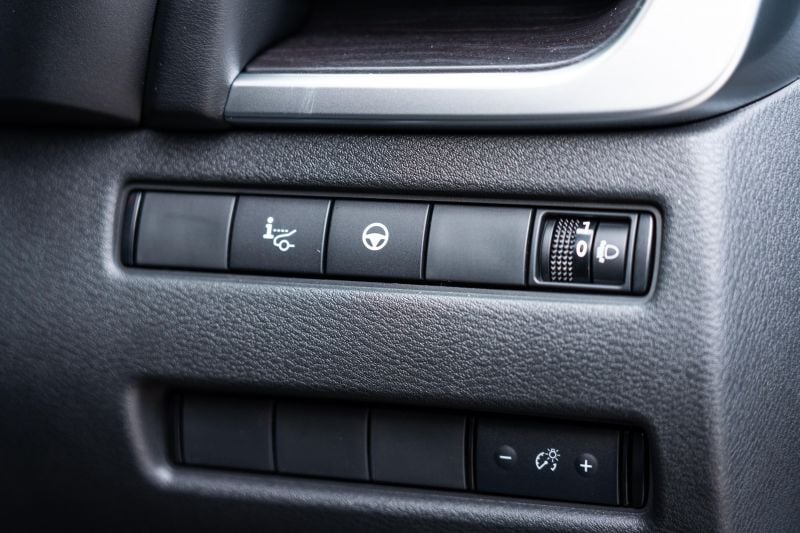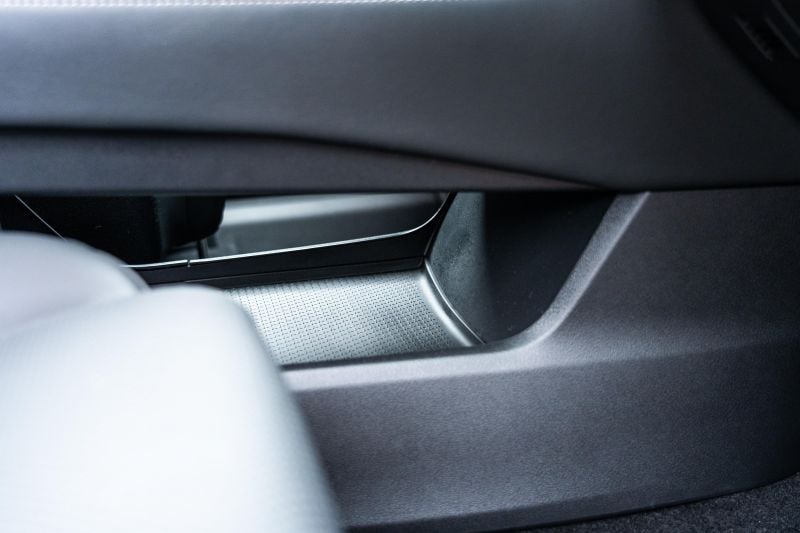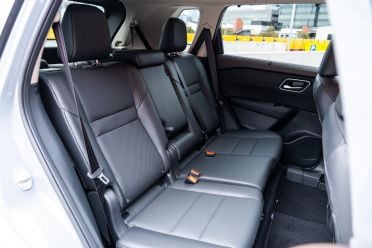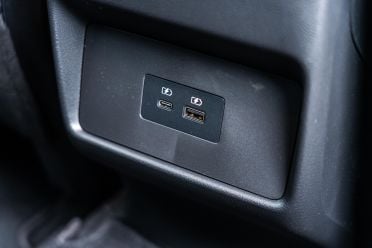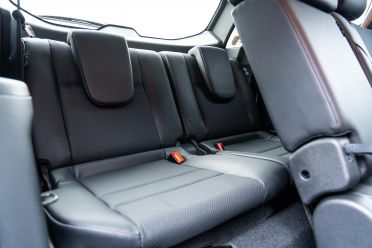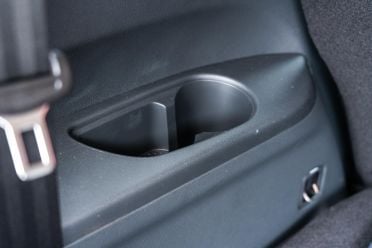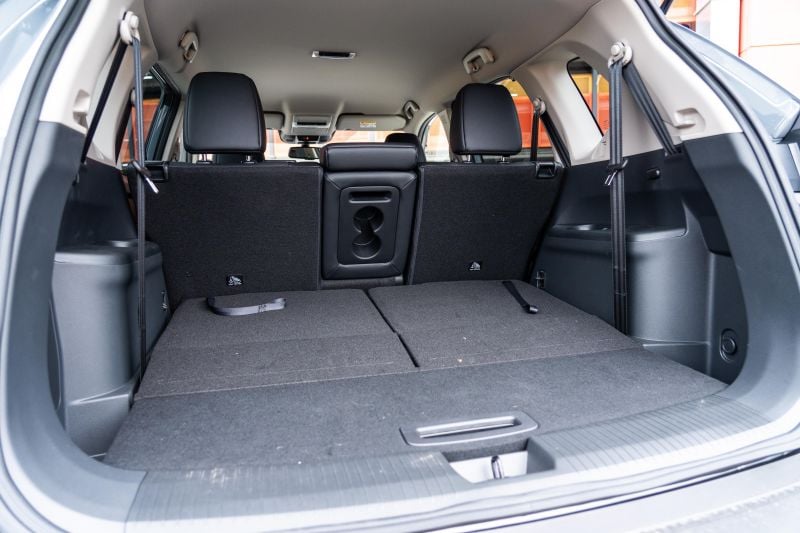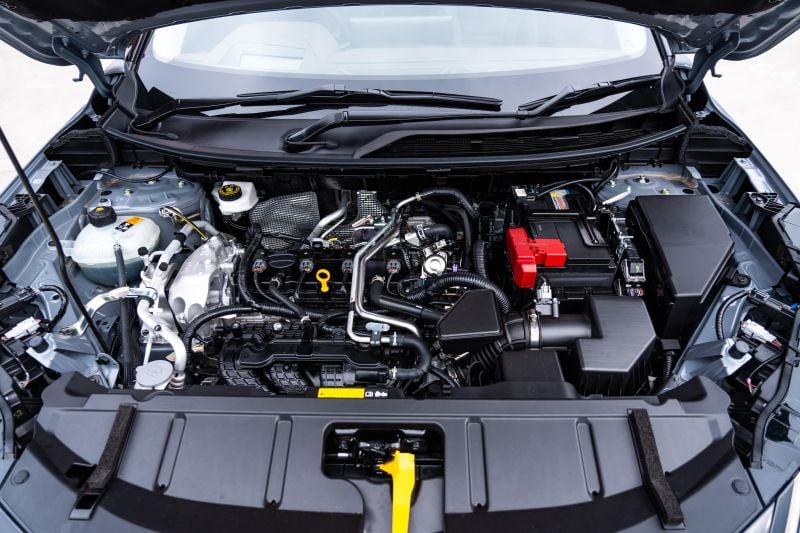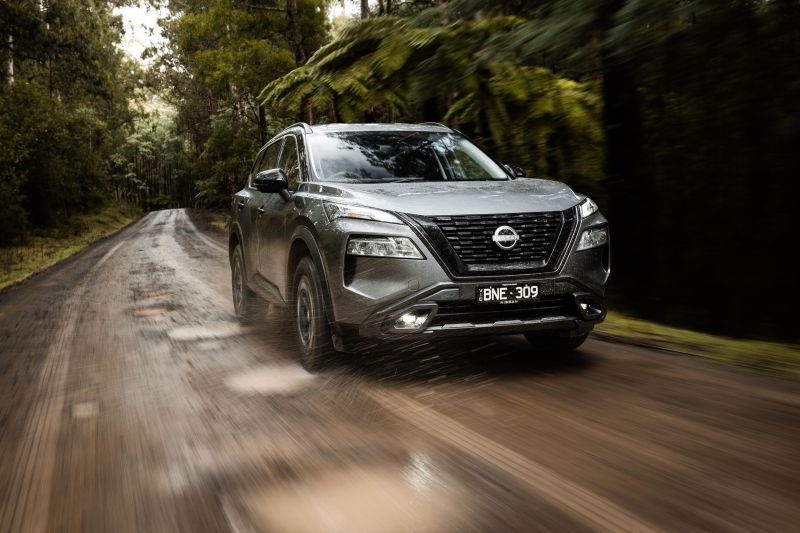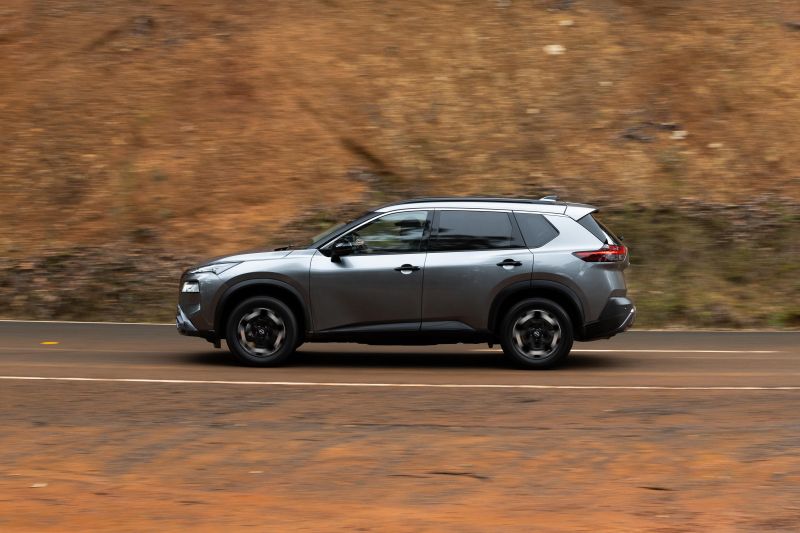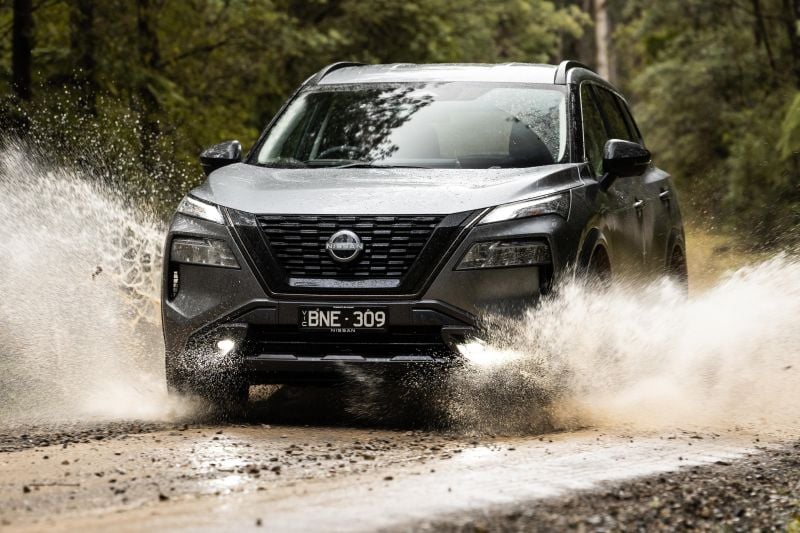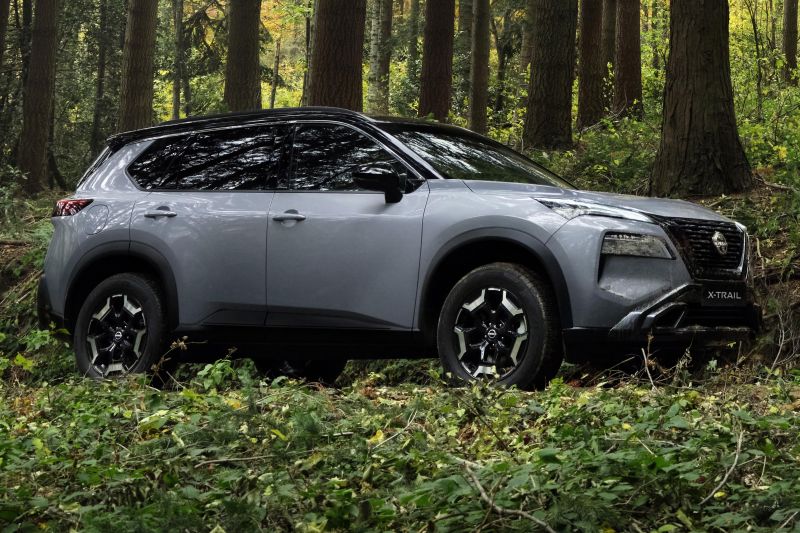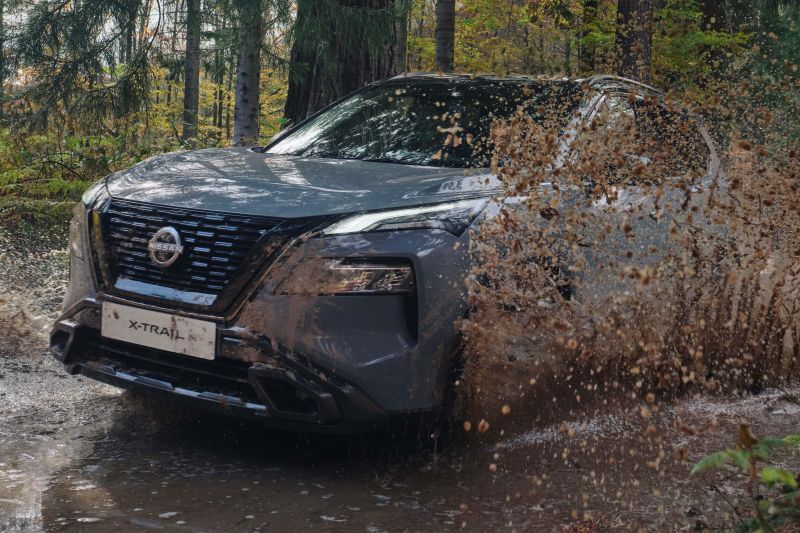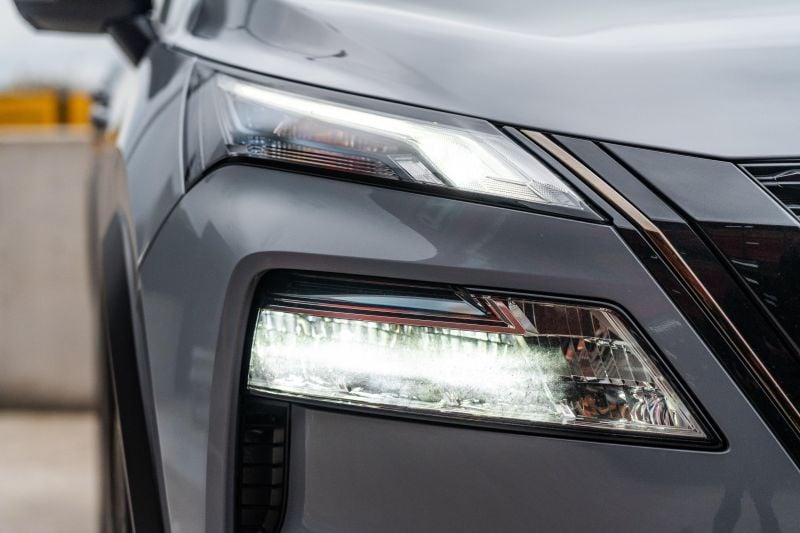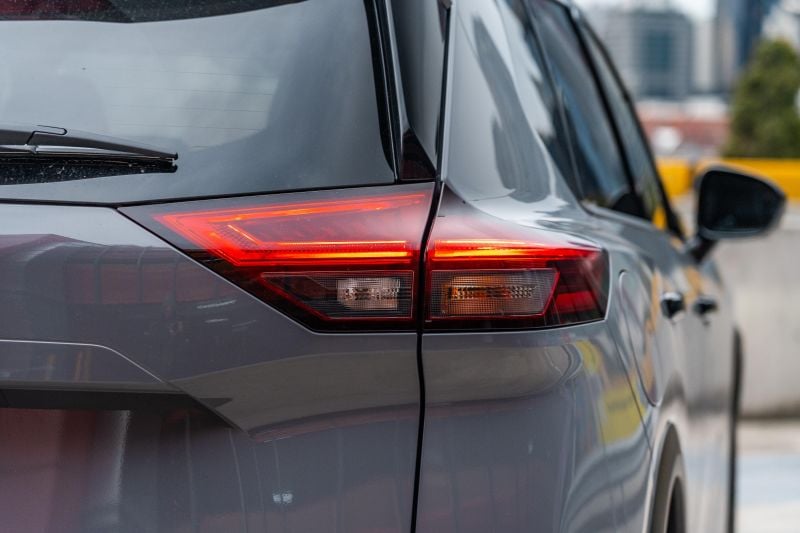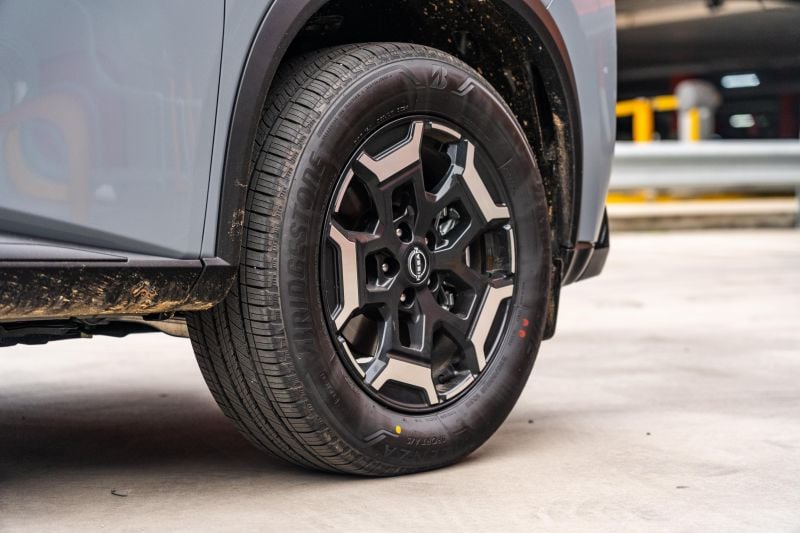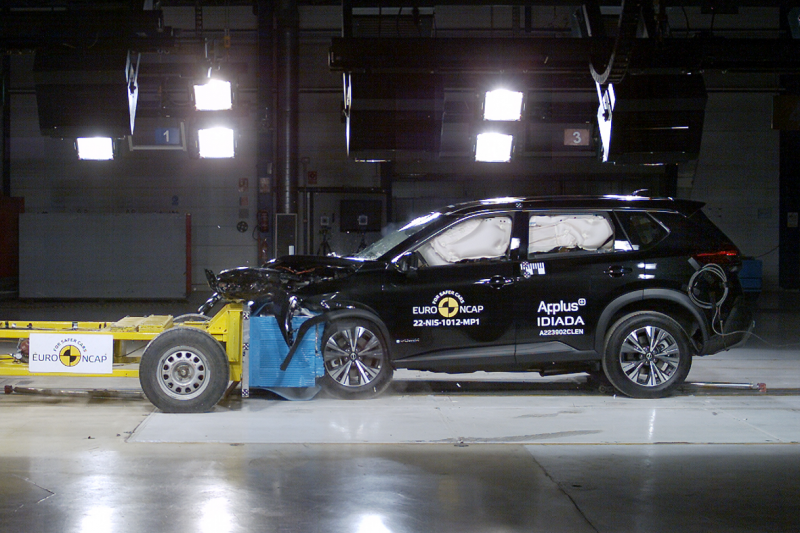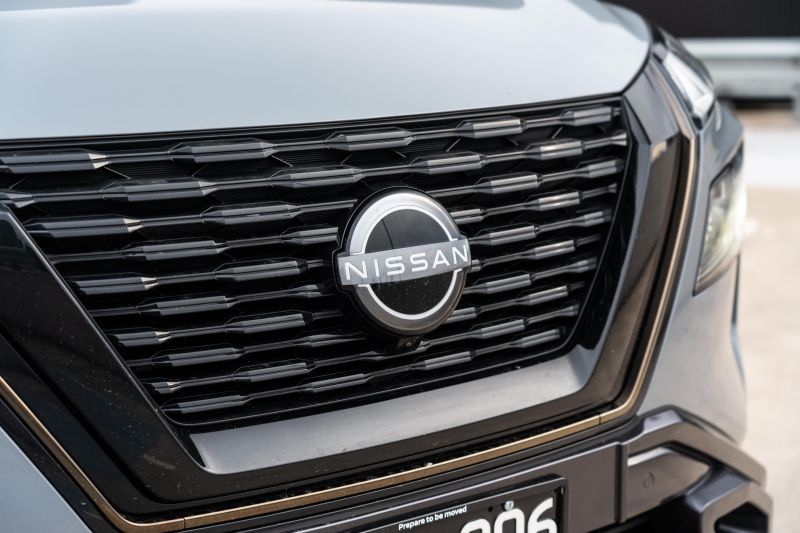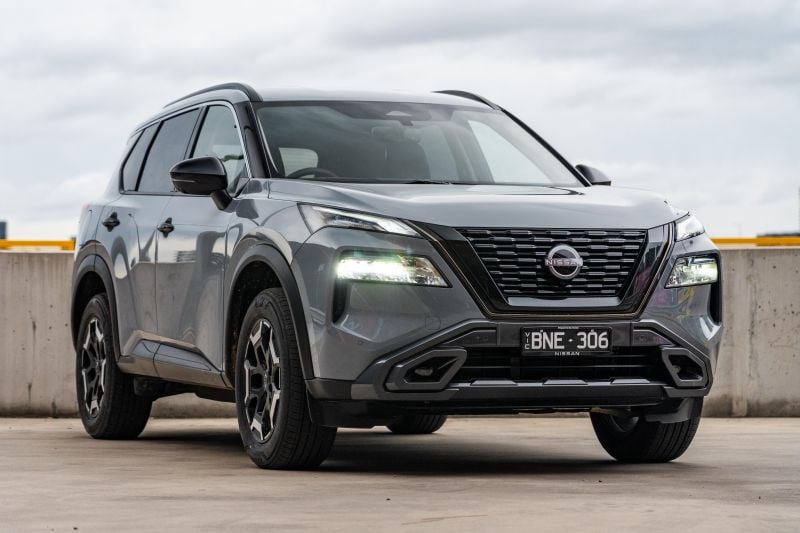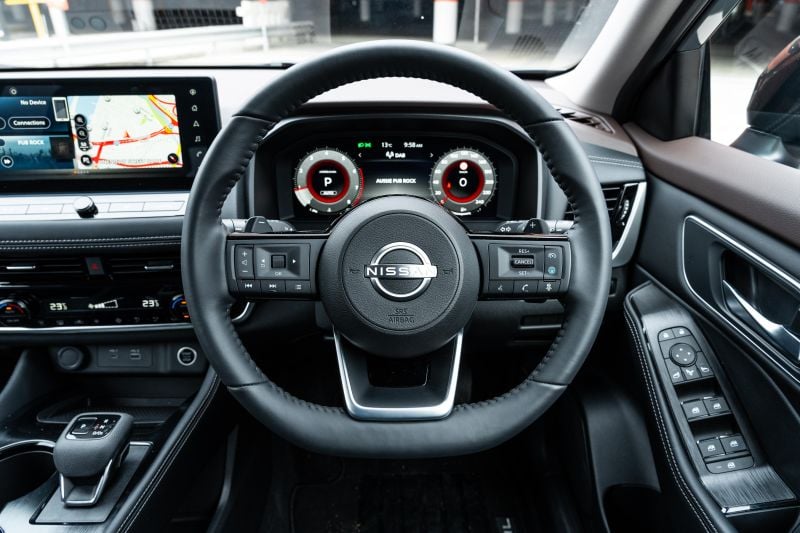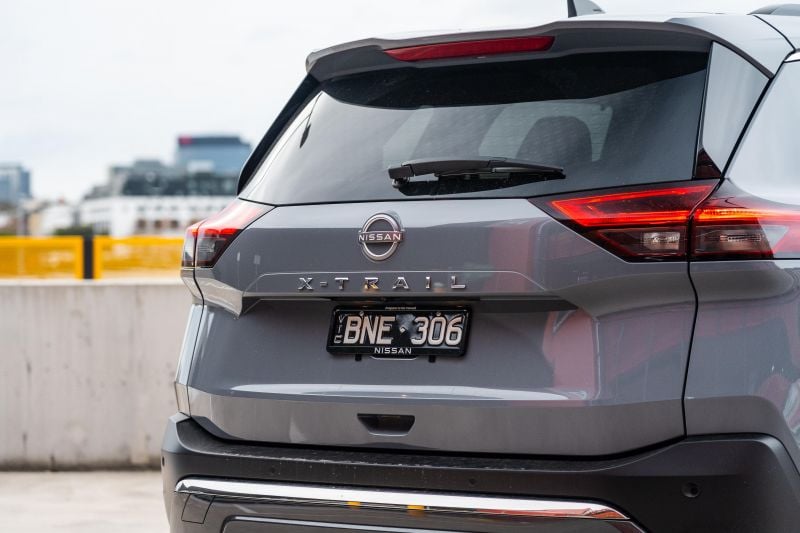You’re looking at Nissan’s best-selling model in Australia.
The mid-size SUV segment is becoming increasingly crowded, but the X-Trail still stands out as a respected name even if it isn’t the sales leader.
This latest-generation model arrived in Australia two years ago, bringing some hefty updates that have led Nissan to describe it as its “most advanced SUV to date” – bold claim, right?
Even if it’s competing against sales heavy-hitters like the Toyota RAV4, Mitsubishi Outlander, Mazda CX-5, and Hyundai Tucson, among myriad others, there’s still plenty of reason why you might want an X-Trail instead.
The latest addition to the X-Trail lineup might be even more reason to don your Nissan hat.
On test here is the Nissan X-Trail N-Trek, which is angled as a more rugged-looking version of the mid-size SUV, bringing tweaked looks inside and out. The nameplate was last offered in 2019 in previous-generation guise.
This variant misses out on Nissan’s excellent e-Power hybrid system, but that means prices stay sharp among its rivals. It’s still packed with tech and has enough going on inside and out.
Better yet, it offers three-row seating – something you don’t see too much in this segment.
Does this tough-looking X-Trail bring enough to hold a torch to its best-selling rivals, or are you better off following the pack?

How much does the Nissan X-Trail cost?
The N-Trek sits on the higher end of the X-Trail range in terms of asking price, and is one of the first cars in the lineup to be priced above $50,000 before on-roads.
| Model | Price before on-road costs |
|---|---|
| 2025 Nissan X-Trail ST five-seat FWD | $37,750 |
| 2025 Nissan X-Trail ST seven-seat AWD | $40,790 |
| 2025 Nissan X-Trail ST-L five-seat FWD | $44,190 |
| 2025 Nissan X-Trail ST-L seven-seat AWD | $47,290 |
| 2025 Nissan X-Trail N-Trek five-seat FWD | $47,790 |
| 2025 Nissan X-Trail ST-L e-Power five-seat AWD | $50,490 |
| 2025 Nissan X-Trail N-Trek seven-seat AWD | $50,890 |
| 2025 Nissan X-Trail Ti five-seat AWD | $50,990 |
| 2025 Nissan X-Trail Ti-L five-seat AWD | $53,990 |
| 2025 Nissan X-Trail Ti e-Power five-seat AWD | $55,190 |
| 2025 Nissan X-Trail Ti-L e-Power five-seat AWD | $58,190 |
To see how the Nissan X-Trail stacks up against it rivals, use our comparison tool.
What is the Nissan X-Trail like on the inside?
The X-Trail is already a nice car to spend time in, but the rugged undertones add some extra spice.
Up front, the X-Trail is hard to fault. There are solid, high-quality materials everywhere, and the placement of fundamentals seems purposeful and carefully planned.
The brown-and-black colour scheme is a unique offering in the range, and while we can understand why some people wouldn’t be a fan, we think it’s nice. Combined with the grey headliner, it’s a pleasant tri-tone palette.
It wouldn’t hurt to have a couple of extra interior colourways available as options, but we like the N-Trek as is. The nice presentation continues the further down with a dark woodgrain-look piece at the bottom of the dashboard.
On the centre console and door armrests there are textured black panels, which retain a classy look without resorting to plain old gloss black. It starts to look grubby if you’re frequently touching it, but scratches and scuffs will be better hidden in the long run.
There are hard plastics underneath the dash and on the bottom of the door cards, though they don’t stand out. The few silver accents help break up all the dark tones too.
The seats of the N-Trek are upholstered in black water-resistant synthetic leather, which are high-quality yet understated. Heating is included in the front, but you miss out on ventilation.
The water-resistant synthetic leather continues on the front-facing portion of the dash, sides of the centre console, and the centre console storage box lid. Interestingly, the latter has a split down the middle and opens sideways, much like what you might find in a higher-end car.
Buttons and knobs are kept to a minimum on the centre console, because you only get a stout gear selector, rotary drive mode selector, parking brake switch, and large button to toggle the auto-hold function.
The majority of physical controls are found higher up, as the climate control system is operated entirely by buttons and knobs. It’s a good setup, though I feel it can be simplified.
For instance, there are three individual buttons to choose which fans are blowing rather than a combined ‘mode’ button. This means you sometimes have to take a second to find the exact button to press when you want to make an adjustment.
That can sound insignificant, but more time mulling over the climate buttons means more time with your eyes off the road.
Even still, I’ll always prefer this setup with its simple LCD display and physical controls over a full-touchscreen alternative. For a key touch point though, I wish it was finished in a harder-wearing material instead of gloss black plastic.
Above that is the infotainment system, which is again surrounded by a gloss black bezel, but it’s a solid unit that brings no major complaints.
The native graphics are a bit cluttered and could do with a refresh, but you get a variety of screens for all the different functions. Hook up wireless Apple CarPlay and you shouldn’t run into any issues.
There is a small array of shortcut buttons and a singular knob directly below the screen, which can be used to control things like tuning and volume aside some other convenient functions.
The buttons are large and easy to make out, and while they are covered in more of that gloss black plastic, there isn’t a lot of reason to be touching the area too often.
Ahead of the driver is a beefy leather-wrapped steering wheel, which houses a total of 15 buttons and one rolling dial on its horizontal spokes. It may seem a lot, but like the rest of the cabin it’s logically laid out and offers control over many of the infotainment and driver assist features.
A nice addition here are the paddle shifters behind the wheel, which work well in Sport mode. The wiper and indicator stalks behind those are also beefy, and engage with a hearty, satisfying action.
Topping it all off is a 12.3-inch digital instrument cluster, which is simple in appearance but does well in showing only the most important information. It comprises two digital gauges for revs and speed, with some space in the middle for the various information menus.
Above that is a 10.8-inch head-up display that works well in conjunction with the cluster. It’s crisp and large in size, which is exactly it should be – given it’s something that’s appearing on the road ahead of you.
Storage in the front of the X-Trail N-Trek is excellent. Not only are there two large cupholders and a generous storage box in the centre console, there’s also a massive tray hidden underneath for loose items or small bags.
There are bottle holders in the door cards and a standard glovebox ahead of the front passenger, as well as a generous cubby underneath the climate control cluster for your phone. The latter conveniently doubles as a wireless phone charging pad, which does well to charge your phone without getting things too hot.
Phone connectivity is done in the same area, with a 12-volt charging outlet with one USB-C and one USB-A port next door.
Climbing into the second row is easy thanks to the comfortably large door opening. The bench is comfortable with plenty of room all round, and you can the fold-down centre armrest reveals two large cupholders and a phone-sized cubby.
The only issue is the soft padding on the centre armrest is minimal, with the cupholders situated on a large plastic panel instead. While it can be quite hard on your elbow, a positive is that it can serve well as a small table on the go.
As for rear amenities, there are two air vents on the back of the centre console, as well as a USB-C port and USB-A port.
Even the middle seat is nicely sized, though it won’t be too comfortable on longer drives. Kids are accounted for too, with two ISOFIX anchors and three top-tether points fitted to the second row.
Our tester was a seven-seater, with two folding seats fitted to the boot. They’re wide and flat, and while you’ll have to try and convince taller people to sit back there on longer drives, it’s actually a well-appointed space.
You can only opt for seven-seat capacity on all-wheel drive versions of the N-Trek, but if you have more people than the average Australian family to be ferrying around it’s worth selecting.
Passengers in the third row benefit from armrest cupholders on each side, and there’s a 12-volt outlet in the boot for charging.
When not in use, the rear row folds almost flat with the help of two pull straps. There is still a slight incline to the floor which means groceries and bags may slide back, but it shouldn’t get in the way of loading larger items.
There’s no load lip into the boot either, with the loading edge protected by a piece of plastic. The N-Trek does miss out on a powered tailgate, but there’s still a space-saver spare tyre under the floor instead of a repair kit.
| Dimensions | Nissan X-Trail N-Trek 4WD |
|---|---|
| Length | 4680mm |
| Width | 2065mm |
| Height | 1725mm |
| Wheelbase | 2705mm |
| Ground clearance | 205mm |
| Boot capacity | 465L – third row folded, to roof |
To see how the Nissan X-Trail stacks up against it rivals, use our comparison tool.
What’s under the bonnet?
There are two engines available with the X-Trail range, and one has e-Power hybrid assistance. Our tester was fitted with a 2.5-litre non-hybrid unit.
| Model | Nissan X-Trail N-Trek |
|---|---|
| Engine | 2.5L 4cyl petrol |
| Power | 135kW @ 6000rpm |
| Torque | 244Nm @ 3600rpm |
| Transmission | CVT |
| Drive type | AWD |
| Fuel economy – claimed | 7.8L /100km |
| Fuel economy – as tested | 7.4L/100km |
| CO₂ emissions | 183g/km |
| Fuel tank | 55L |
| Fuel requirement | 91 RON |
| Weight | 1666kg (kerb) |
| Braked towing capacity | 2000kg |
| Gross vehicle mass (GVM) | 2295kg |
To see how the Nissan X-Trail stacks up against it rivals, use our comparison tool.
How does the Nissan X-Trail drive?
In keeping with the practical interior, the on-road experience is refined and comfortable.
Nissan isn’t trying to make the N-Trek a luxury vehicle, but the Japanese brand has done well to present a solid car that can simply get the job done. The X-Trail is already a strong car mechanically, which means the N-Trek is set up for success.
Firing up the 2.5-litre petrol engine is done via the small button ahead of the gear selector, and noise is kept to a minimum even when the engine is cold.
Flick it into drive and you’ll notice the responsive accelerator when it’s time to set off. Navigating carparks and tight spaces is also made thanks to the X-Trail’s light steering, though its feel is direct and consistent out on the road.
One of the more understated things is the indicator stalk action, which engages with a hearty, wood-like knock. It’s the little things that can sometimes be the most satisfying.
Pulling out onto the road isn’t a problem for the X-Trail, despite the naturally aspirated petrol engine only offering a modest power output.
There’s no e-Power setup available for the N-Trek, which is a shame given how well-suited it is in some of the more expensive X-Trail variants. It would offer a boost in power, but it isn’t a must-have for the light off-roading this version is intended for.
The only available transmission in all non-hybrid X-Trail grades is a CVT, but you wouldn’t know it by the way it drives. Gone are the high-revving noisy characteristics CVTs are known for, as Nissan has dialled it in to feel like a standard automatic.
You get paddle shifters too, which allow you to “shift” through simulated gears. You can switch to Sport mode using the dial on the centre console, which gives you a bit of extra control with those paddle shifters – not to mention the warm-ish performance it unlocks.
The key takeaway for the N-Trek – and by extension the X-Trail range – is how easy it is to drive despite the big-car feel. It’s also comfortable behind the wheel.
It’s easy to understand where you’re placing the car on the road and in tight carparks. The large cabin also creates space for large windows which means rear visibility is excellent.
You get the added security of a surround-view camera in the N-Trek, which in conjunction with the front and rear parking sensors makes it easy to back into any space.
This system benefits from external monitoring that keeps an eye on everything moving around the car, which is useful in built-up areas where pedestrians are everywhere.
On that note, the driver assistance tech in the X-Trail N-Trek is well-calibrated and reliable. It has adaptive cruise control with lane-keep assist, which does exactly what it says on the tin without any hiccups.
The system is activated by pressing the blue button on the right of the steering wheel, and when activated it’s easy to relax and let the car eat up the kilometres on the highway.
It has no trouble keeping the car centred in its lane, and it responds well to changes in traffic ahead. When it’s not activated, the passive lane-keep assist isn’t intrusive and instead gently steers you back into your lane when drifting towards the line.
The N-Trek is also fitted with an intuitive speed limiter function if you don’t want to solely rely on its in-built systems.
When you’re on higher-speed roads, driving the N-Trek is a comfortable experience. It’s fitted with 18-inch wheels which means its tyres are chunky enough to absorb smaller imperfections on the road.
It also means road and wind noise is kept to a comfortable level, but we’d stop short of saying it’s quiet. The engine chugs along at a steady hum and only pipes up when you lay your foot into the accelerator.
That means its on-road comfort is largely as you’d expect, but there’s also a solid quality to how the car behaves.
As mentioned the steering is direct, but the suspension is set up in a way that controls the body nicely. Larger bumps aren’t completely ironed out, but the X-Trail handles them in a consistent way that never feels unsettled or floaty.
An added bonus is its all-wheel drive system, which – even if you’re not taking the N-Trek off-road all that often – is a reassuring selling point. It grips up with no issues in the wet, and it’s useful to know it’s there if you actually need it.
Because it’s an all-wheel drive X-Trail, it comes with hill-descent control as standard. There are also a selection of drive modes for various driving conditions you could be plunging into, including dedicated off-road and snow settings.
Each drive mode brings with it graphical tweaks to the digital instrument display, including a number of different colours and animations for a bit of flair.
Regardless of drive mode, the instrument display is clear and easy to read on the move. Everything is written in large letters and numbers, with clutter and distractions kept to a minimum outside of the manually selectable menus.
On the road, the N-Trek benefits from the well-established driving characteristics of the X-Trail range. It’s refined, comfortable, and offers driving dynamics that are easy to work with from its engine and gearbox setup.
Driver assist tech isn’t annoying and can be toggled at the press of a button, while travelling with such systems engaged is stress-free and effortless.
To top it all off, our tester was surprisingly fuel-efficient. We managed to record a figure well under Nissan’s claim, which matched the fuel economy rating for front-wheel drive X-Trail models despite being the heavier and more complicated AWD version.
To see how the Nissan X-Trail stacks up against it rivals, use our comparison tool.
What do you get?
The X-Trail N-Trek is largely based on the ST-L, though it adds some tweaked aesthetics and some tech from the higher-spec Ti.
Nissan X-Trail ST highlights:
- Proximity entry with approach unlocking and walkaway locking
- 17-inch alloy wheels
- Automatic LED headlights
- Auto-folding, heated mirrors
- Roof rails
- Fabric upholstery
- Paddle shifters
- 7.0-inch digital instrument cluster
- 8.0-inch infotainment touchscreen
- DAB+ radio
- 6-speaker sound system
- 4 x USB points (one USB-A, two USB-C front and rear)
- Wired Apple CarPlay, Android Auto
- Space-saver spare wheel
X-Trail ST-L adds:
- 18-inch alloy wheels
- Privacy glass
- Front parking sensors
- Fog lights
- Dual-zone climate control
- Synthetic leather-accented seats
- Heated front seats
- Power driver’s seat
- Leather-wrapped steering wheel
- 12.3-inch touchscreen infotainment system
- Satellite navigation
- Wireless phone charger
- Wireless Apple CarPlay and Android Auto
- Auto-dimming rear mirror
- Sliding rear seats, 40:20:40 folding
- ‘Divide-N-Hide’ cargo area system
X-Trail N-Trek adds:
- Dark-finish grille surround, lower front bumpers, mirrors, door handles and roof rails
- Unique 18-inch wheels
- LED fog lights
- Water-resistant synthetic leather
- 12.3-inch digital instrument cluster
- 10.8-inch head-up display
Is the Nissan X-Trail safe?
The new X-Trail wears a five-star ANCAP safety rating based on crash testing carried out by Euro NCAP in 2021.
| Category | Nissan X-Trail |
|---|---|
| Adult occupant protection | 34.66 out of 38 (91 per cent) |
| Child occupant protection | 44.12 out of 49 (90 per cent) |
| Vulnerable road user protection | 40.17 out of 54 (74 per cent) |
| Safety assist | 15.56 out of 16 (97 per cent) |
Standard features on all grades:
- Autonomous emergency braking (AEB)
- Pedestrian, Cyclist detection
- Junction assist
- Reverse AEB with Pedestrian detection
- Blind-spot assist
- Lane departure warning
- Lane-keep assist
- Traffic sign recognition
- Automatic high-beam
- Adaptive cruise control
- Reversing camera
- Rear parking sensors
- 7 airbags incl. front-centre airbag
ST-L and above add:
How much does the Nissan X-Trail cost to run?
The X-Trail is covered by Nissan’s standard five-year, unlimited-kilometre warranty with five years of roadside assist.
| Running costs | Nissan X-Trail N-Trek |
|---|---|
| Warranty | 5 years, unlimited kilometres |
| Roadside assistance | 5 years |
| Service intervals | 12 months or 10,000 kilometres |
| Capped price servicing | 6 years |
| Total capped price service cost | $3017 |
You can purchase pre-paid two-, three-, four- and five-year servicing plans, which are priced at $743, $1219, $1728 and $2092, respectively. Nissan does only offer 10,000km service intervals for the X-Trail though, while many of its rivals offer 15,000km intervals.
To see how the Nissan X-Trail stacks up against it rivals, use our comparison tool.
CarExpert’s Take on the Nissan X-Trail
The X-Trail is already a good car, and the N-Trek additions just add a little bit more for those who want it.
Sure, the off-road additions and tweaks are mostly cosmetic, but it benefits from strong tech from the ST-L. That variant is a strong pick too, so it’s a good foundation to be working from.
The N-Trek certainly looks the part with its visual tweaks on the exterior, and while its interior is a little too nice to be mud- and dirt-ridden, having a comfortable family SUV that can hold its own off-road is reassuring for weekend getaways.
It’s relatively economical too, which means you’ll have no worries getting to and from wherever you’re going while saving some money on fuel costs.
The versatility offered with the seven-seat arrangement is a nice bonus, while having an AWD system brings some added confidence if you have your family in the car.
It would still be nice to have the e-Power drivetrain available as an option on this trim level, because there are advantages to having a more economical hybrid system that also comes with a small power boost.
The way the third row doesn’t fold completely flat may also be a hindrance when the boot is loaded, but it is nice to have some kind of spare wheel, even if it isn’t full-size.
Having a full-size spare would further eat into cargo space, but it’s almost always the preferable option for off-road applications.
All in all, it’s hard to argue against the formula. It’s sharply priced too, which means it’s a realistic and sensible option for mildly adventurous family travellers.
Click on the images for the full gallery
Interested in buying a Nissan X-Trail? Get in touch with one of CarExpert’s trusted dealers here





